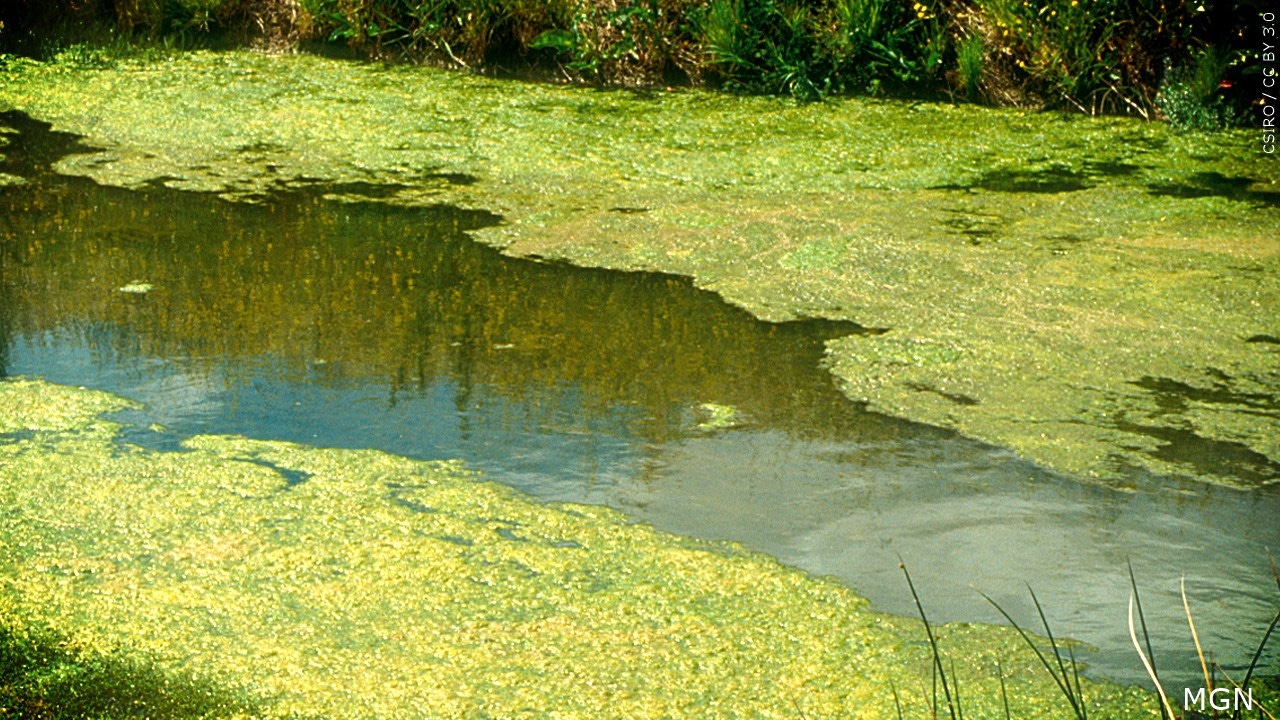MPCA warns swimmers, pet owners of algae blooms on Minneapolis lakes
[anvplayer video=”5115381″ station=”998122″]
As warm weather brings more people and animals to beaches across the state of Minnesota, state officials are warning of potentially toxic algae blooms that are already happening on bodies of water.
According to the Minnesota Pollution Control Agency (MPCA), a combination of hot weather and run-off from spring storms are helping trigger the blooms.
Swimming advisories have been issued for both Lake Hiawatha and Lake Harriet in Minneapolis due to reports of blooms spotted on those waterways.
“It’s more than usual,” said Tamara Caban-Ramirez, of Minneapolis. “In the deep water and on the shore.”
State officials say with more hot weather expected during the next few days, more blooms could happen ahead of the Fourth of July holiday.

(CSIRO / CC BY 3.0 / MGN)
“No one wants to really recreate in a lake that has green scum or kind of floating green material all over the surface,” said Lee Engel, spokesperson for the MPCA.
If you think a body of water looks green and slimy, especially if it has a blue-green tint, the MPCA says you and your pets should stay out of it.
The MPCA adds algae can have toxic bacteria that can cause people to get sick, or kill animals within hours of contact.
“We do have a few reports each year that pets having adverse conditions from the toxins, and occasionally we do have dog deaths,” Engel noted, adding, “if your skin comes in contact with the water, it may cause irritants such as a rash or itchy skin.”
You can protect pets who go swimming by:
- Keeping them out of algae-laden water,
- Washing them off after playing in a lake or stream,
- Keeping them from licking their coat,
- Contacting your veterinarian if you think your pet was exposed to blue-green algae.
If you come into contact with the toxic algae, rinse off with clean water and monitor for skin, throat, eye, and nose irritation, as well as nausea, according to the agency.
If you come across possible toxic algae, you can report it by sending photos of the suspected harmful blooms to THIS ADDRESS.
The MPCA says while lakes in southern and western parts of the state have more phosphorus and chlorophyll-a than those in the north and east, about 25% of lakes have phosphorus and algae levels that are too high and don’t meet the standards needed for recreational activities.
The MPCA urges people to avoid using fertilizers containing phosphates, as well as clearing clogged storm drains and cleaning up after pet waste.
“Try to reduce excess runoff coming. Limit the amount of nutrients entering the lake, and thus keep the water quality in good condition,” Engel said.
CLICK HERE to learn how to lower the amount of pollution that helps create algae.